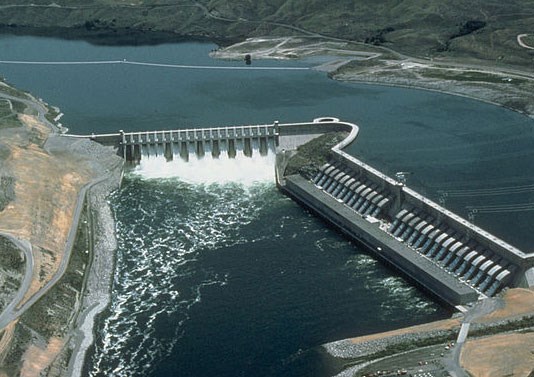Hydroelectric dams can cause 70% extinction of wildlife
According to research results published on July 1 in the US journal PLOS ONE, hydroelectric dams can kill up to 70% of wild animals living in the neighborhood.
Hydroelectric dams adversely affect wildlife
The study is based on observations of many wildlife species in the Amazon rainforest, near the Balbina hydroelectric dam of Brazil.

Illustration.(Source: ucsusa.org)
The dam created one of the world's largest hydroelectric reservoirs, Lake Balbina, by flooding a forested area and dividing the area into 3,546 islands.
Except for the largest islands, on the remaining islands, landscape changes have led to extinction of many mammals, birds and tortoises over the past 26 years.
Research suggests that as many as three-quarters of the wildlife in this area will disappear due to the existence of the Balbina dam.
Specifically, according to a study author, Carlos Peres of the University of East Anglia (UK), there will be more than 70% of 124,110 wildlife species in the area of Lake Balbina are extinct.
Meanwhile, Mr. Maira Benchimol of the University of Estadual de Santa Cruz (Brazil), director of the study, said that only 25 out of 3,546 islands in this lake, islands with an area of more than 475ha, were beaten. The price is still preserving the original diverse animal system .
In the context that Brazil is planning to build more hydroelectric dams in the coming years, the expert group called on the government to consider the latest research results when conducting environmental impact assessments of the companies. this process.
Hydropower plants often use hydroelectric dams to increase the pressure of natural water sources to generate electricity.
These dams have been considered an important source of clean energy because they do not require fossil fuel burning, but a series of studies in recent years have shown that these dams have a negative impact on Fisheries industry and local communities.
Hydroelectric dams are also at risk of increasing methane emissions and other greenhouse-gas-producing emissions.
- Discover the world's largest hydroelectric dam
- The construction site of the second largest hydropower station in the world
- South Africa hydroelectric dam has a capacity of 480 billion liters of running water
- Smashing the Mekong River
- Hydroelectric dams: Loi is inadequate?
- Hydroelectric dams are discharging too much emissions?
- Small dams threaten fish species on the Mekong River
- Will hydroelectric dams eradicate the largest Pacific salmon?
- Chinese hydroelectric dams slow down the Earth
- Damming contributes to global warming
- China: breaking the dam, sinking 19 villages
- Extract methane from hydroelectric dam
 Is the magnetic North Pole shift dangerous to humanity?
Is the magnetic North Pole shift dangerous to humanity? Washington legalizes the recycling of human bodies into fertilizer
Washington legalizes the recycling of human bodies into fertilizer Lightning stone - the mysterious guest
Lightning stone - the mysterious guest Stunned by the mysterious sunset, strange appearance
Stunned by the mysterious sunset, strange appearance